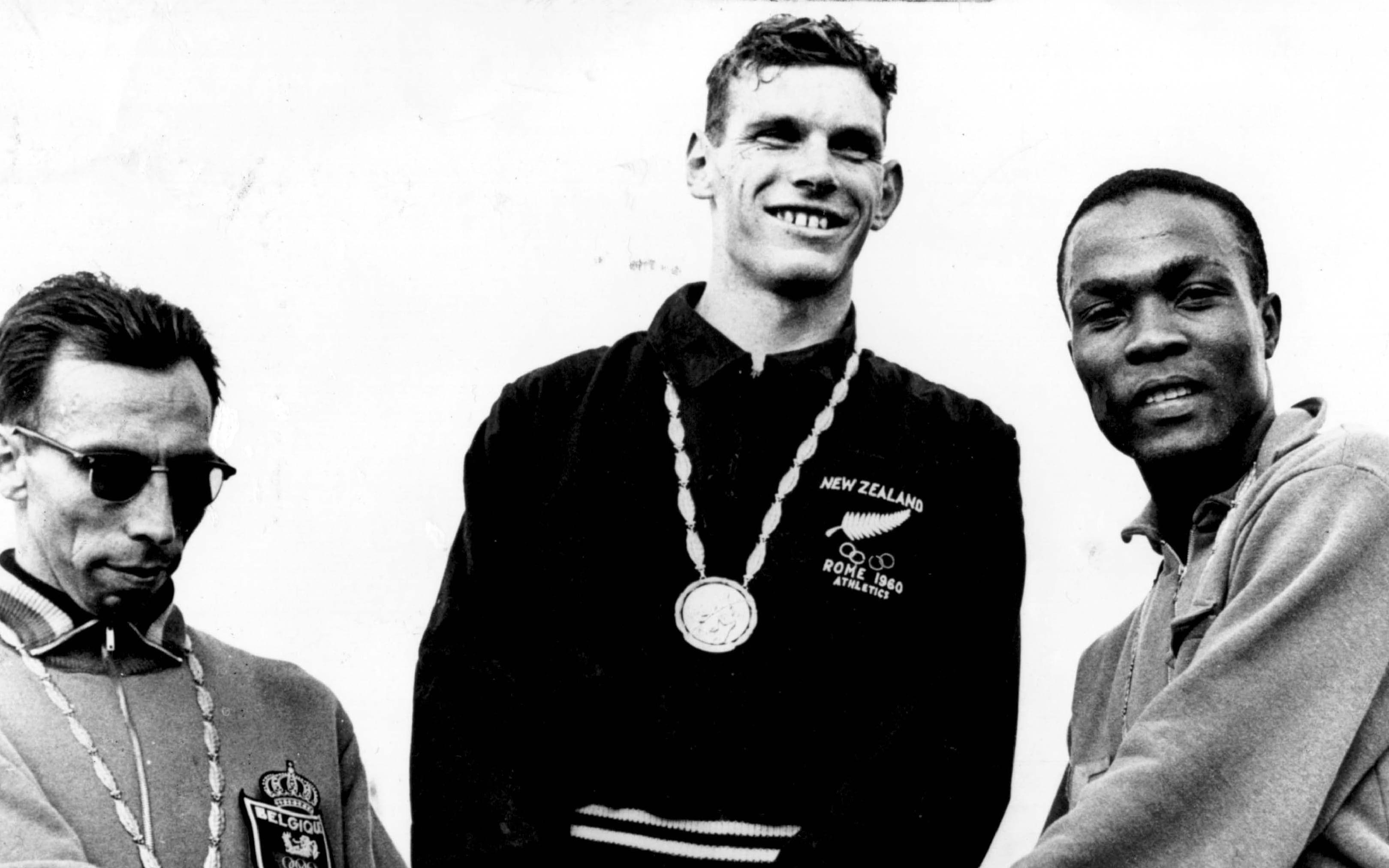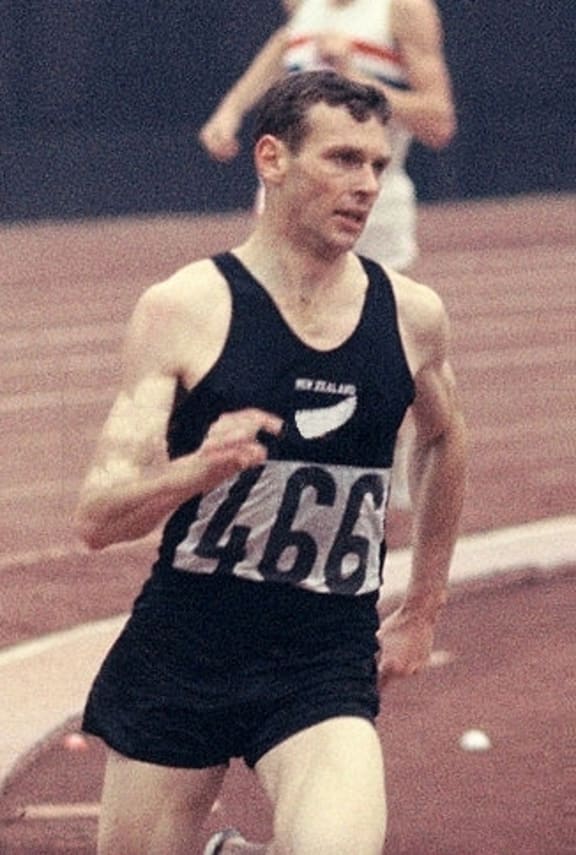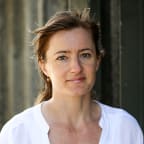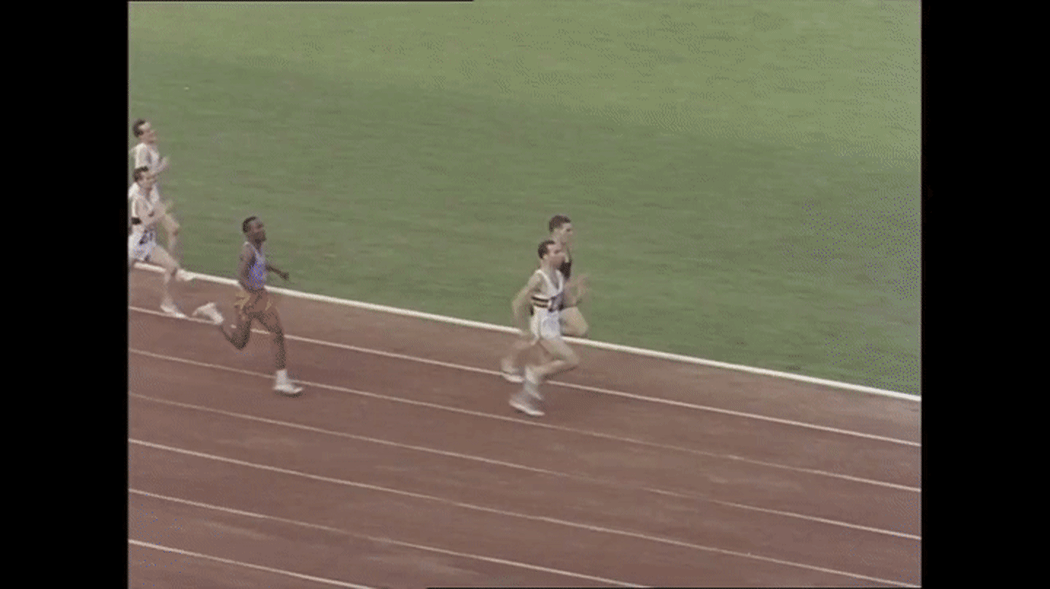Golden Moments - It was an unprecedented golden double whammy, spanning less than an hour. And yet, it continues to live on, inspiring, more than half a century later.

Peter Snell wins gold at the Rome Olympics for the mens 800m, 1960. Photo: Photosport
First, the final of the Olympic 800m at Rome in 1960 and a young Peter Snell lines up in the black singlet, already reaching his goal of making the final.
For Snell the first challenge had been to convince his country to let him attend the games.
"I was ranked 25th in the world that year in 800 metres. The standard for making the selection is reasonable chance of making the final and a lot of people felt I didn't have that chance," he recalled later.
He was just 21 when he burst through to win the final from Roger Moens, the world record-holder.
Snell later said he was "stunned", barely believing that suddenly he was an Olympic champion.
"I recall looking up to the giant results board above the track and seeing P G Snell NZL at the top of the list. That was one of the great thrills of my life."
Snell's magic afternoon at Rome was completed half an hour later when Murray Halberg won the 5000m gold medal.
It took Halberg a while to mature as an athlete.
At the 1956 Melbourne Olympics he reached the final of the 1500m, but then ran a poor tactical race, slipping back through the field to finish almost last.
Devastated, he vowed to himself that he would return to the Olympic stage and fulfil what he believed was his destiny - to be an Olympic champion.
By 1960 he was favoured to win the Olympic 5000m title. He and master coach Arthur Lydiard decided on the same tactics he'd successfully employed at the 1958 Cardiff Empire Games - sprinting clear with three laps remaining and then holding on. It was a tactic that called for boldness and tenacity.
Spurred on by stablemate Peter Snell's victory, Halberg carried out the plan perfectly. He put 20m on the field with his sudden burst and held half that margin all the way to the tape.

Listen to commentary of Murray Halberg's victory. Graphic: 123rf
Both athletes have left indelible marks on New Zealand's sporting landscape.
Sir Murray Halberg, as he is now, delivered no better example of exemplifying the Olympic spirit of triumphing over adversity.
He was so badly injured while playing rugby when he was 17 that he was left with a paralysed left arm, which required months of rehabilitation.
Halberg then turned to running.
"It's something that happens with people who all but lose their lives at some stage that they become a different person, there's almost like a re-birth and I guess I was born stronger," he said years later.

Sir Murray Halberg Photo: Photosport
Halberg won Empire Games 3 mile golds in 1958 and 1962. In 1958, he became the first New Zealander to break four minutes for the mile.
Halberg's achievements gave him the springboard that enabled him to launch the Halberg Trust for Crippled Children.
Halberg was knighted in 1988 and in 1990 was inducted into the New Zealand Sports Hall of Fame.
In 2008 he became only the fourth person to be awarded the Blake Medal (named after fellow countryman Sir Peter Blake) for his more than 50 years' service.
Three Olympic gold medals, two Empire Games golds, a clutch of world records and no defeats in major races saw Peter Snell voted New Zealand Athlete of the Century in 2000.
In 1990, at the inaugural New Zealand Sports Hall of Fame induction, he was the first person honoured.
Along with Halberg and the other outstanding pupils of Arthur Lydiard, Snell was responsible for the finest era in New Zealand athletics.
In the early 1960s, Snell was an absolute cult figure. He was named 1960s Athlete of the Decade by the authoritative Track & Field News.
If he signalled his intention to run, massive crowds flocked to see him (he often drew crowds of 25,000) around New Zealand.
Snell capped of his career at the Tokyo Olympics in 1964 by completing a rare 800m-1500m gold medal double.

Peter Snell in the 1500m final at the Tokyo Olympics, 1964. Photo: WikiCommons
Post retirement Snell turned his attention towards achieving academic honours and in the early 70s moved to the United States.
After gaining a PhD at Washington State University, he moved to Dallas to do a post-doctoral fellowship.
These days Sir Peter Snell is in heavy demand to present papers and make speeches on exercise physiology.
He has maintained his contact with New Zealand. He was a Governor of the Sports Foundation. In 1990 he ran the final lap at the Auckland Commonwealth Games opening ceremony.
Snell was awarded the Lonsdale Cup in 1962 and 1964. In 2002 he was made a Distinguished Companion of the New Zealand Order of Merit, and a few years later officially became Sir Peter Snell.




